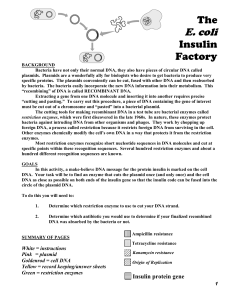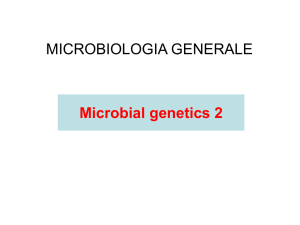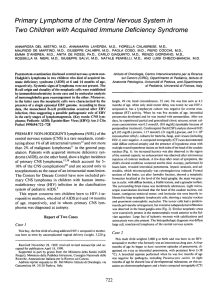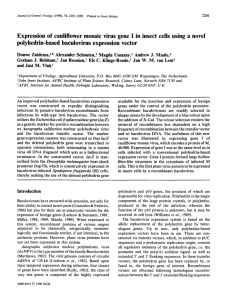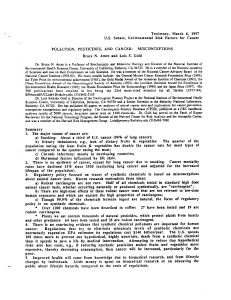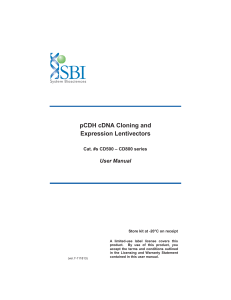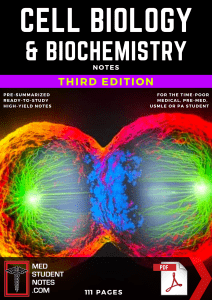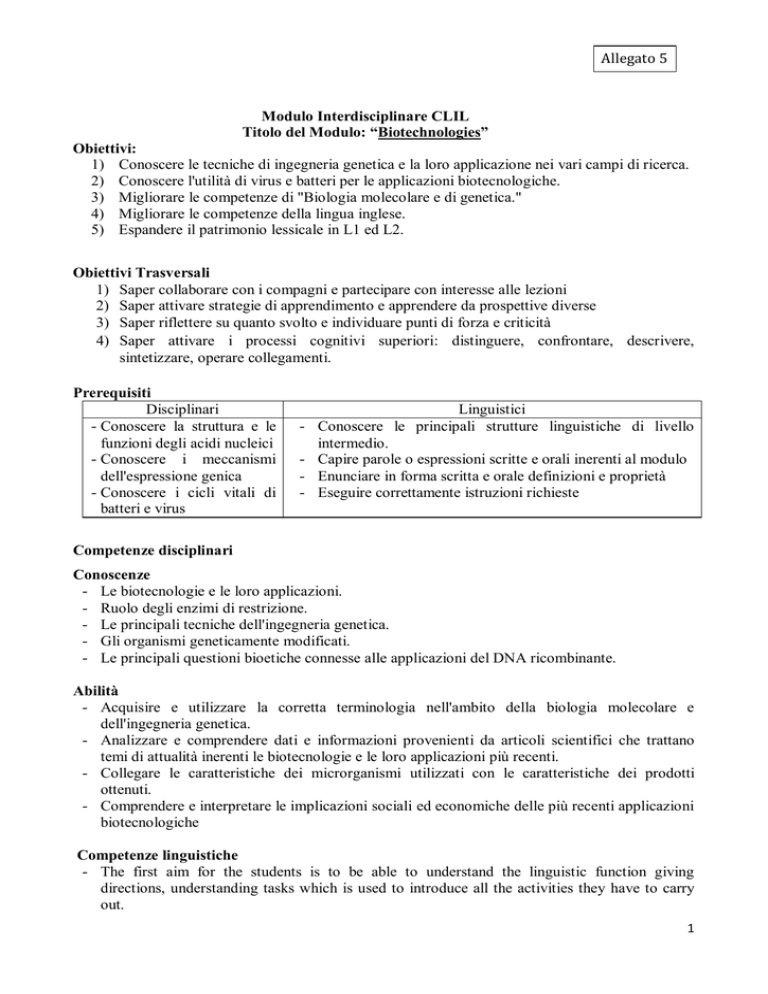
Allegato 5
Modulo Interdisciplinare CLIL
Titolo del Modulo: “Biotechnologies”
Obiettivi:
1) Conoscere le tecniche di ingegneria genetica e la loro applicazione nei vari campi di ricerca.
2) Conoscere l'utilità di virus e batteri per le applicazioni biotecnologiche.
3) Migliorare le competenze di "Biologia molecolare e di genetica."
4) Migliorare le competenze della lingua inglese.
5) Espandere il patrimonio lessicale in L1 ed L2.
Obiettivi Trasversali
1) Saper collaborare con i compagni e partecipare con interesse alle lezioni
2) Saper attivare strategie di apprendimento e apprendere da prospettive diverse
3) Saper riflettere su quanto svolto e individuare punti di forza e criticità
4) Saper attivare i processi cognitivi superiori: distinguere, confrontare, descrivere,
sintetizzare, operare collegamenti.
Prerequisiti
Disciplinari
- Conoscere la struttura e le
funzioni degli acidi nucleici
- Conoscere i meccanismi
dell'espressione genica
- Conoscere i cicli vitali di
batteri e virus
-
Linguistici
Conoscere le principali strutture linguistiche di livello
intermedio.
Capire parole o espressioni scritte e orali inerenti al modulo
Enunciare in forma scritta e orale definizioni e proprietà
Eseguire correttamente istruzioni richieste
Competenze disciplinari
Conoscenze
- Le biotecnologie e le loro applicazioni.
- Ruolo degli enzimi di restrizione.
- Le principali tecniche dell'ingegneria genetica.
- Gli organismi geneticamente modificati.
- Le principali questioni bioetiche connesse alle applicazioni del DNA ricombinante.
Abilità
- Acquisire e utilizzare la corretta terminologia nell'ambito della biologia molecolare e
dell'ingegneria genetica.
- Analizzare e comprendere dati e informazioni provenienti da articoli scientifici che trattano
temi di attualità inerenti le biotecnologie e le loro applicazioni più recenti.
- Collegare le caratteristiche dei microrganismi utilizzati con le caratteristiche dei prodotti
ottenuti.
- Comprendere e interpretare le implicazioni sociali ed economiche delle più recenti applicazioni
biotecnologiche
Competenze linguistiche
- The first aim for the students is to be able to understand the linguistic function giving
directions, understanding tasks which is used to introduce all the activities they have to carry
out.
1
The expression used are concerned with:
- The imperative ( complete, work out, find, explain, prove,…)
- To have to…
- The second purpose is to know and to be able to use the microlanguage used in their activities
- The third objective is to be able to produce the language used to express the rules necessary to
work out the activities.
Metodologia
Lezione dialogata
Lezioni multimediali di ascolto e visione
Cooperative Learning
L’attività è stata svolta con metodologia CLIL. Tale metodologia prevede un apprendimento
fondamentalmente attivo, interazionale e cooperativo. Le fasi in cui è stato diviso il modulo
sono le seguenti :
Fase 1 INTRODUCTION
a) attività motivazionale di warming up.
b) attività di verifica dei prerequisiti disciplinari mediante Brainstorming
c) attività di contestualizzazione disciplinare
Fase 2 READING AND LISTENING
In questa fase gli studenti hanno lavorato in piccoli gruppi secondo uno svolgimento cooperativo
e socializzante
Fase 3 PRACTICE
In questa fase sono state proposte attività di consolidamento, rinforzo, approfondimento e
verifica in cui gli alunni hanno adoperato le conoscenze e le abilità disciplinari e linguistiche
obiettivo del modulo.
2
How is biotechnology changing our lives?
BIOTECHNOLOGIES
Are a group of different technologies using viruses and living organisms. In particular, bacteria and yeast
cells are largely used in ricombinant DNA tecnology.
To create a recombinant DNA molecule, a DNA fragment taken from a donor is inserted into a small DNA
molecule (the cloning vector).
The recombinant vector is introduced into a host cell, which is grown to form a clone of a new gene or of the
protein desired.
A few techniques also use stem cells, unspecialized cells that have the capability of dividing and
differentiating into specialized cells. Embryos are a good source of stem cells.
Language skills
Recombinant DNA Technology
1. Gene of interest (DNA) is isolated
(DNA fragment)
2. A desired gene is inserted into a DNA molecule (the cloning vector)
(plasmid, bacteriophage or a viral genome)
3. The vector inserts the DNA into a new cell, which is grown to form a clone.
(bacteria, yeast, plant or animal cell)
4. Large quantities of the protein desired or of the gene product can be harvested from the clone.
3
VIRUSES
They are not living organism but microscopic particles.
Consisting of a inner core made up of a nucleid acid (DNA or RNA) surrounded by a protein coat
(Capsid).
Certain viruses are termed «enveloped viruses», their capsid is surrounded by a membrane coat.
They replicate only within the living cells of bacteria, animals or plants . They are obligate
intracellular parasities .
VIRUS REPLICATION
Viruses recognize specific receptors on the cell membrane and release only their nucleic acid into
the host cell cytoplasm, whereas the capside remains outside (bacteriophages). The enveloped
viruses enter the host cell entirely. Inside the host cell, the nucleic acid directs the synthesis of new
viruses, using the cell biochemical apparatus to synthesize various copies of the capsid proteins and
replicate the viral nucleic acid, then to produce new virus particles which are released from the
infected cell.
4
VIRUS AND BIOTECHNOLOGY
Since viruses introduce their DNA and RNA into cells as part of their replication cycle, they can be
used as cloning vectors, to clone large fragments of DNA, or to produce viral vaccines.
The ability of certain viruses to integrate into the cell genome makes these viruses suitable as
vehicles, in order to deliver a therapeutic gene directly into the target cell, in gene therapy
Exsercises:
In groups, complete the flow chart below about the structure of viruses, using the words listed. then
compare your choice with the other groups.
virus-nucleic-DNA-RNA--proteins-envelope-capsid-core
5
BACTERIA
Are prokaryotic unicellular organism, used in molecular biology and genetics to clone genes of
interest. Possess a cell wall which can be coated by a capsule composed of polypeptides of Dglutamic acid. The cytoplasm contains a bigger chromosomal DNA and smaller circular DNA
molecules called plasmids. Organs of locomotion are: pili or one or more flagella.
BACTERIA AND BIOTECHNOLOGY
Biotechnology uses bacteria to make antibiotics, insulin, human growth hormone, vitamins, and
other drugs.
A way to get genes into bacteria easily:
insert new gene from other organism into plasmid
insert plasmid into bacteria
bacteria now expresses new gene
bacteria make new protein
gene from
other organism
cut DNA
plasmid
+
recombinant
plasmid
transformed
bacteria
vector
glue DNA
The bacterial DNA is protected from the cleavage by methylation (process by which methyl
groups are added to DNA segments). This modification blocks cleavage, since it makes the
restriction sites unrecognizable to the restriction enzymes. These restriction enzymes:
cut DNA at specific sequences (restriction site);
recognize symmetrical “palindrome” (sequences of four to eight bases that are read in the
same way in both directions);
produces sticky ends that will bind to any complementary DNA.
Bacterial restriction enzymes and plasmids can be easily used in recombinant DNA technology to
manipulate DNA of an organism.
6
YEAST CELLS
They are eukaryotic unicellular organis
Yeasts reproducing by budding
A bud on the parent cell originates a new
yeast cell, as a consequence of a division of
the cell on a particular site
They have been used for thousands of years in baking and in alcoholic beverage production
YEAST CELL AND BIOTECHNOLOGY
Since the early 1980s the yeast cells have been widely employed in genetics and molecular biology
since they can be easily manipulated and cultured in the laboratory.
The yeast cells are able to perform different eukaryote-specific post-translational modifications,
necessary for proteins to achieve a functional shape.
Yeasts are used in research:as protein factories, to express large quantities of eucaryotic
proteins;for therapeutic applications;in research to determine their functional and regulatory
properties.
WHY BIOTECNOLOGIES USE YEAST CELLS?
Although bacteria are very useful in cloning ,they are not suitable to express eukatyotic genes,
owing to the fact that the processes of transcription and traslation in prokaryotes are too simple,
compared with those occurring in eukaryotic cells. The Problem has been solved using yeast cells,
wich are able to perform different eukaryote-specific post –traslation modifications necessary for
proteins to achieve a functional shape.
7
STEM CELLS
They are undifferentiated cells, having the remarkable
potential to develop into different specialized cell types in the
body.
They play important roles in living organisms. For example,
the stem cells present during the earliest stage of
development of a human embryo, called blastocysts, give rise
to all the specialized cell types present in an organism.
Stem cells are also found in adult tissues and organs, such as bone marrow, muscle and skin.
What do they do?
These special cells have the remarkable role of replacing worn out or damaged cell, or act as a
repair system, dividing without limits, and replacing the old cells with the new ones, to regenerate
the damaged tissue.
Researchers use human stem cells in various ways:
To study the cellular differentiation: the process where a cell changes from one cell type to
another. Most commonly the cell changes to a more specialized type.
To create tissues that could be used in therapy: tissue culture allows biologists to recreate
articular cartilage, nostrils or ears. Thanks to bioreactors, researchers have even managed to
create organs with cells from the same organism.
To test new drugs: human embryonic stem cells are being used to determinate the toxicity of
potential pharmaceuticals.
8
Despite their potential, human stem cells are at center of a fierce debate. Research on embryonic
stem cells raises an ethical dilemma.
We must choose between two moral principles:
1) The duty to prevent or relieve suffering
2) The duty to respect the value of human life
EXSERCISES:
9
UNIT 2 - Recombinant DNA and biotechnology
Click on the following link and watch the video twice
http://www.youtube.com/watch?v=Wm6_BBS-KE4
Then answer the following questions. Compare your choices with your partner
1.
a.
b.
c.
What is biotechnology?
The use of chromosomes to enjoy our lives
The use of cells to make our lives better
A very old technology
2.
a.
b.
c.
What is the body made up of?
Millions of cells
Trillions of cells
Trillions of shells
3.
a.
b.
c.
What do cells provide?
The structure for the soul
The structure for the cells
The structure for the body
4. What do they take in?
a. Nutrients from food
b. Nutrients from bacteria
c. Nutrients from drinks
10
5.
a.
b.
c.
What do they contain?
The blood's material
The body's hereditary material
The body's material
6.
a.
b.
c.
What do almost all cells have?
A focus that contains DNA
A nucleus that contains DNA
The meaning of life
7.
a.
b.
c.
What genetic language do cells speak?
A genetic language
The same genetic language
Different genetic languages
8.
a.
b.
c.
What answers can biotechnologies give us?
To live more
To spend less money on medicines
To live longer and healthier lives
What is recombinant DNA?
A recombinant DNA molecule is created in a laboratory by combining sequences derived from
different genetic sources, so as to generate new combinations of genes. Tecnology of recombinant
DNA is based on the following criteria:
1.
2.
3.
4.
identify the gene which will be transferred;
cut (by restriction enzymes) DNA of the donor in fragments to isolate the gene of interest;
divide the fragments of restriction and sequence them;
product many identical copies of the gene (genetic cloning or PCR, Polymerasis Chain
Reaction);
5. introduce the fragments of DNA in a vector (virus or plasmid);
6. cultivate colonies of bacteria or viruses containing, in each colony, only one fragment of
DNA;
7. select the colonies which contain the gene target of our study.
11
12
13
Biotechnology and its applications
Biotechonlogy refers to the application of technology to modify and improve the biological
function of an organism by modifying its genome.
For centuries, people have been using microorganisms, in order to make bread, wine, cheese, and to
preserve dairy products. Today biotechonology industry relies on recombinant DNA technology and
genetic engineering techniques. Biotechnology embraces different fields: medicine, research,
agriculture and environment.
Biotechnology in Medicine and Research
Today, recombinant DNA technology makes it possible to synthesize vaccines or therapeutic
products.
Vaccines and medical drugs are produced using transgenic organisms that have been genetically
engineered to produce a specific pharmaceutical of interest. These kinds of drugs named
biopharmaceuticals: the recombinant Growth hormone and the recombinant Factor VIII and Factor
IX are only three examples.
Growth hormone
Factor VIII
Factor IX
Growth hormone GH is a protein hormone secreted by the pituitary gland, which stimulates growth
and cell reproduction. Unlike in the past, GH is produced through biotechnology and used in children and
adult who suffer from GH deficiency .
Factor VIII and Factor IX
Haemophilia is a genetically inherited disorder caused by the deficiency in two proteins required for
blood clotting Factor VIII (haemophilia A) Factor IX (haemophilia B)
People affected by haemophilia need intravenous infusions of these clotting factors, to prevent
bleeding episodes
In the past these proteins were obtained from fresh frozen plasma. In this way, deseases like
hepatitis B and AIDS could be transmitted. The problem were solved when biologists were able to
cloning and product recombinant coagulation factors. To understand how a certain gene works,
scientists started to study mice that have been genetically engineered by the inactivation of that
gene. In fact, in this way, physical and biochemical characteristics are altered Comparing the
obtained data with the normal data from normal mice, it’s possible to understand how the gene
normally works.
Monoclonal antibodies
Engineered molecules, produced by transgenic rats, that recognize cancer cells mimicking the
natural antibodies.
14
Depending on the kind of tumor to be treated they can be synthesized in several ways and are used
to:
• to mark cancer cells in particular, to be more easily recognized and eliminated by the immune
system;
• be combined with a radioactive particle, to provide radiation to the tumor cell;
• to recognize and block the extra copies of the growth factor receptors synthesized by cancer
cells.
Specific antigens are synthesized thanks to genes cloned from genomic DNA, used to prepare
vaccines.
Hepatitis B vaccine, prepared using one of the viral envelope proteins HbsAg (hepatitis B surface
antigen), copied by recombinant yeast cells where the gene for HBsAg is inserted.
Biotechnology in Agricolture-GMO Plants
GMO plants can be obtained by manipulating an existing gene, to create a new allele, or by
introducing a new gene in a cell or an organism to form a transgenic organism.
Genetically modified crops (GMCs, GM crops, or biotech crops) are plants used agricolture, the
DNA of which has been modified using genetic engineering techniques. In most cases, the aim is to
introduce a new trait to the plant which does not occur naturally in the species. Examples in food
crops include resistance to certain pests, diseases, or environmental conditions, reduction of
spoilage, or resistance to chemical treatments (e.g. resistance to a herbicide), or improving the
nutrient profile of the crop. Examples in non-food crops include production of pharmaceutical
agents, biofuels, and other industrially useful goods, as well as for bioremediation.
Why create gmo plants?
1) They are created to make them more resistant to viral desease, insects, and herbicedes
2) To make them more resistant to etreme conditions of temperature, pH or salinity
3) To improve their taste and nutritional values
15
Colorado Potato Beetle Resistant Potato
This variety of potato is an instance of a genetically engineered potato plant
that is able to synthesize its own insecticide, naturally produced by the
bacterium Bacillus thuringiensis
How to produce Beetle Resistant Potato
They have been produced by introducing the gene encoding the CryIIIA
protein from the bacterium into the potato genome, this technique is called
Agrobacterium tumefaciens-mediated transformation.
The analysis of nutrients did not reveal any signifcant differences between the
transgenic lines and the normal potatoes, they are extremely unlike to be
allergenic and devoid of any potential toxicity.
Golden rice.
Golden rice is an example of a biofortified crop, having the capacity to produce β-carotene, a
precursor of vitamin A, in its grains
Rice plants produce provitamin A only in the green tissue, whereas the grains, which are the only
edible part, do not.
Thanks to promoter, the gene responsible for beta-carotene synthesis was expressed in the
endosperm
Golden rice 2
The anti-GMO criticized that the Golden rice did not have sufficient vitamin A. This problem was
solved in 2005 with the production of GOLDEN RICE 2. This variety was able to synthesize obout
20 times more carotenoids than the original Golden rice
• Golden rice was created by transformig rice with two beta-carotene biosynthesis genes:
• psy (phytoene synthase) from daffodil
• crtI (carotene desaturase) from the soil bacterium Erwinia uredovora
The psy and crtI genes were transferred into the rice nuclear genome and placed under the control
of an endosperm-specific promoter, so that they are only expressed in the endosperm.
16
Dolly the sheep
A clone has the same DNA sequence as its parent and so they are genetically identical.
Dolly the sheep, as the first mammal to be cloned from an adult cell, is by far the world's most
famous clone. However, cloning has existed in nature since the dawn of life. The plants have been
cloned: a cutting is capable of producing a clone of the original plant; identical human twins are
they
clones.
Several clones had been produced in the lab before Dolly, including frogs, mice, and cows, which
had all been cloned from the DNA from embryos.
Dolly was remarkable in being the first mammal to be cloned from an adult cell. This was a major
scientific achievement as it demonstrated that the DNA from adult cells, despite having specialised
as one particular type of cell, can be used to create an entire organism
How Dolly was cloned
Animal cloning from an adult cell is much more difficult than from an embryonic cell.
So when scientists working at the Roslin Institute in Scotland produced Dolly, the only lamb born
from 277 attempts, it was a major news story around the world.
In 1996, University of Edinburgh scientists celebrated the birth of Dolly the Sheep.
The Edinburgh team’s success followed its improvements to the
single cell nuclear transfer (SCNT) technique used in the
cloning process.
Dolly became a global scientific icon and SCNT technology has
spread around the world and has been used to clone multiple
farm animals.
Professor Sir Ian Wilmut and colleagues worked on methods to
create genetically improved livestock by manipulation of stem
cells using nuclear transfer
To produce Dolly, scientists used an udder cell from a six-year-old Finn Dorset
white sheep. They had to find a way to 'reprogram' the udder cells - to keep them
alive but stop them growing – which they achieved by altering the growth medium
(the ‘soup’ in which the cells were kept alive).
17
Then they injected the cell into an unfertilised egg cell came from a Scottish Blackface ewe which
had its nucleus removed, and made the cells fuse by using electrical pulses.
When the research team had managed to fuse the nucleus from the adult white sheep cell with the
egg cell from the black-faced sheep, they needed to make sure that the resulting cell would develop
into an embryo.
They cultured it for six or seven days to see if it divided and developed normally, before implanting
it into a surrogate mother, another Scottish Blackface ewe.
Dolly had a white face.
What happened to Dolly?
Dolly lived a pampered existence at the Roslin Institute. She mated and produced normal offspring
in the normal way, showing that such cloned animals can reproduce.
Born on 5 July 1996, she was euthanased on 14 February 2003, aged six and a half. Sheep can live
to age 11 or 12, but Dolly suffered from artrithis in a hind leg joint and from sheep pulmonary
adenomatosis, a virus-induced lung tumour that is common among sheep which are raised indoors
Why clone sheep?
Dolly the sheep was produced at the Roslin Institute as part of research into producing medicines in
the milk of farm animals.
Researchers have managed to transfer human genes that produce useful proteins into sheep and
cows, so that they can produce, for instance, the blood clotting agent factor IX to treat haemophilia
or alpha-1-antitrypsin to treat cystic fibrosis and other lung conditions.
Inserting these genes into animals is a difficult and laborious process; cloning allows researchers to
only do this once and clone the resulting transgenic animal to build up a breeding stock.
The development of cloning technology has led to new ways to produce medicines and is improving
our understanding of development and genetics.
Since 1996, when Dolly was born, other sheep have been cloned from adult cells, as have cats,
rabbits, horses and donkeys, pigs, goats and cattle.
In 2004 a mouse was cloned using a nucleus from an olfactory neuron, showing that the donor
nucleus can come from a tissue of the body that does not normally divide.
18
19
Glossary
Donor= Donatore
Cloning vector= Vettore di clonazione
Host cell= Cellula ospite
Yeast cell= Lievito
Stem cell= Cellula staminale
Inner core= Nucleo interno
Protein coat= Copertura proteica
Capsid= Involucro(capside)
Enveloped virus= Virus avvolto-coperto
Autonomously= Autonomamente
Target cell= Cellula bersaglio
Plasmid= Plasmide
Metabolic pathway=Percorso metabolico
Foreign DNA= DNA estraneo
Restriction endonuclease= Nucleasi di restrizione
Palindromic=Palindromo
Cleavage=Sfaldamento
Embryo=Embrione
Blastocyst=Blastocisti
Bone marrow= Midollo osseo
Phosphodiester bond= Legame fosfodiesterico
Tranfection= Trasfezione
Strand= Filamento
Blund-end= Estremità piatta-smussata
Sticky-end= Estremità sporgente
Unpaired=spaiato
Staggered cut= Taglio sfalsato
Overhang= Sporgenza
Ligation Phase= Fase di legatura
Aim= Scopo
Basic research=Ricerca di base
Drug=Farmaco
Phenotype=Fenotipo
Suitable= Idoneo
Selectable marker= Marcatore selezionabile
Suitable medium= Mezzo adatto
Human corpse= Cadavere umano
Inherited disorder= Malattia ereditaria
Blood Clotting= Coagulazione
Monoclonal antibody =Anticorpo monoclonale
Cancer cell= Cellula cancerogena
20

